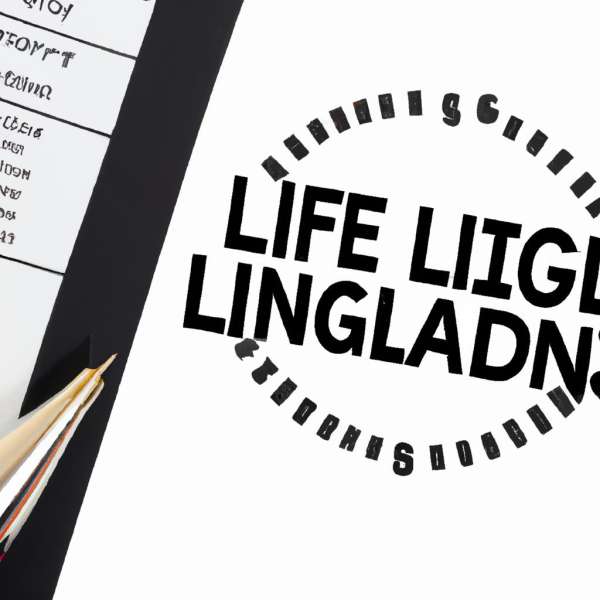Navigating the Complex World of Personal Injury Law
Understanding the intricacies of personal injury law can be daunting, particularly for those who are not well-versed in legal matters. Imagine finding yourself in a situation where an accident has caused you physical pain, emotional turmoil, and mounting medical expenses. The journey to obtaining justice might seem overwhelming, but gaining knowledge on how to file a personal injury lawsuit can provide you with the confidence needed to tackle this difficult period. This article aims to walk you through the critical steps involved in initiating a personal injury claim, simplifying the process while offering valuable insights to help you defend your rights and secure the compensation you deserve. Whether you are considering legal action or simply exploring your options, our comprehensive guide will shed light on the path ahead, making it less intimidating.

Grasping the Basics of Personal Injury Law
Before diving into a personal injury lawsuit, it is crucial to understand some fundamental concepts that will empower you as you navigate the legal landscape. Personal injury cases often hinge on the principle of negligence, which involves a failure to exercise reasonable care, resulting in harm to another person. Proving negligence typically requires establishing four key elements:
- Duty of Care: The defendant had a legal obligation to act in a certain way towards the plaintiff.
- Breach of Duty: The defendant failed to meet the expected standard of care.
- Causation: The breach directly caused the injury or damage suffered by the plaintiff.
- Damages: The plaintiff experienced actual harm or injury that can be compensated.
Personal injury claims can be categorized based on the circumstances of the case. Here is a brief overview of some common types:
| Type of Injury | Examples |
|---|---|
| Automobile Accidents | Collisions, pedestrian injuries |
| Slip and Fall | Wet floors, uneven sidewalks |
| Medical Malpractice | Surgical errors, misdiagnosis |
| Workplace Accidents | Construction injuries, repetitive strain |
It is essential to be aware of the time limits for filing a personal injury lawsuit, known as the statute of limitations. This timeframe varies by state and type of injury, impacting your right to seek compensation. Missing this deadline can result in losing your ability to claim damages, highlighting the importance of timely legal action.

Collecting Crucial Evidence to Strengthen Your Case
Building a strong personal injury case requires meticulous evidence collection. This evidence will not only support your claims but also enhance your credibility in court. Start by thoroughly documenting the scene of the incident: take clear photographs, gather witness statements, and note the conditions surrounding the event. Key details to cover include:
- Photographic Evidence: Capture images of injuries, property damage, and the scene’s layout.
- Witness Information: Collect names and contact details of individuals who witnessed the incident.
- Medical Records: Compile all relevant medical documentation, including diagnoses and treatment plans.
- Accident Reports: Obtain police reports or official documents detailing the incident.
In addition to physical evidence, consider the importance of a detailed timeline. Construct a chronological account of events leading up to the injury. This can clarify causation and help establish liability. Use tables to organize your findings efficiently, making it easier to present during legal proceedings.
By understanding these fundamental aspects and gathering essential evidence, you can navigate the complexities of personal injury law with greater confidence and effectiveness.
When preparing for court proceedings, it’s essential to maintain a detailed record of events. Below is a straightforward format you can use:
| Date & Time | Event Description | Evidence Collected |
|---|---|---|
| MM/DD/YYYY, HH:MM | Incident occurred | Photos, witness statements |
| MM/DD/YYYY | Medical examination | Medical reports, invoices |
| MM/DD/YYYY | Legal consultation | Notes, retainer agreement |
It’s crucial to document all expenses related to your injury, such as medical bills, therapy sessions, and lost wages. This thorough documentation will not only strengthen your case but also help in accurately calculating the damages you are entitled to recover. Remember, meticulous evidence collection is vital for a successful personal injury lawsuit.

Navigating the Legal Process and Deadlines
Filing a personal injury lawsuit demands careful attention to detail, especially regarding legal procedures and deadlines. Understanding the timeline for each step in the process is essential to ensure your case isn’t dismissed due to procedural errors. When pursuing your claim, you will typically encounter several critical milestones:
- Statute of Limitations: This is the period within which you must file your lawsuit, usually ranging from one to three years depending on your state. Missing this deadline means forfeiting your right to seek compensation.
- Initial Complaint: Drafting and filing your complaint to formally initiate the lawsuit is the first step. It outlines your case against the defendant, including your allegations and the damages you seek.
- Discovery Phase: After the lawsuit is filed, both parties engage in discovery, where they exchange evidence and gather information. This phase is typically time-bound, so active participation is crucial.
- Mediation and Settlement Discussions: Many cases settle before reaching trial, so timely negotiations can often lead to a resolution without the need for lengthy litigation.
Keeping track of all relevant dates is essential for a smooth process. Below is a table highlighting a typical timeline associated with a personal injury lawsuit:
| Event | Date Trigger | Typical Duration |
|---|---|---|
| Consultation with Attorney | After Injury | Varies |
| Filing Complaint | Within Statute of Limitations | Immediate |
| Discovery Phase | After Filing Complaint | 6-12 months |
| Trial Date | After Discovery | Varies (1-3 years after filing) |
By staying organized and proactive throughout the legal process, you position yourself to effectively navigate each stage. Ensure that you maintain close communication with your attorney and adhere to any deadlines they set, as this can significantly impact the success of your personal injury case.

Maximizing Compensation: Strategies for Negotiation and Settlement
Successfully negotiating a fair settlement or compensation for a personal injury claim involves a strategic approach. Here are some key techniques that can enhance your negotiating power:
- Conduct Thorough Research: Gain a comprehensive understanding of the standard compensation for your specific injury within your legal jurisdiction. This insight will help you set realistic goals and build a compelling case.
- Keep Detailed Records: Ensure you meticulously document all medical expenses, lost income, and other related costs. Thorough documentation will bolster your position during settlement discussions.
- Be Ready to Negotiate: While it’s important to start with high expectations, remain open to negotiation. Evaluate potential compromises and be prepared to consider reasonable offers as they arise.
Moreover, seeking professional advice can significantly enhance your negotiation tactics. Consulting with seasoned personal injury lawyers can offer valuable insights and direction. Here’s how they can assist:
| Attorney’s Role | Benefits |
|---|---|
| Claim Evaluation | Analyze the strengths of your case to develop effective negotiation strategies. |
| Legal Advocacy | Represent your interests with insurance companies to ensure fair compensation. |
| Litigation Preparedness | Prepare for court proceedings if negotiations do not succeed, enhancing your bargaining power. |
Maintaining a respectful and open dialogue with the opposing party can lead to a more favorable outcome. Approach negotiations with a willingness to listen and adapt to the evolving situation. By employing these strategies, you will be better positioned to maximize your compensation in your personal injury case.
Final Thoughts
Embarking on a personal injury lawsuit can be daunting within the complex legal landscape. However, with the right knowledge and support, you can confidently navigate this challenging process. From understanding the intricacies of your case to gathering crucial documentation and adhering to deadlines, each step is essential in your pursuit of justice. Remember, while the journey may be difficult, it is achievable. By partnering with experienced professionals and staying well-informed, you empower yourself to effectively advocate for your rights. As you proceed, may you find clarity, strength, and the resolution you seek. Your path to recovery begins with informed decisions, and this article serves as a vital guide in that important journey.
Your Ultimate Guide to Winning a Personal Injury Lawsuit
Understand the Basics of Personal Injury Law
Personal injury law exists to provide compensation to individuals who have been injured due to someone else’s negligence. Familiarizing yourself with the basics can significantly enhance your chances of a favorable outcome.
What Qualifies as a Personal Injury?
Common personal injury claims include:
- Car accidents
- Slip and fall cases
- Medical malpractice
- Product liability
- Workplace injuries
Find the Right Personal Injury Attorney
One of the most crucial steps in winning your case is hiring an experienced personal injury attorney. Make sure to research and choose someone specialized in the specific area of your case.
Qualities of a Good Personal Injury Lawyer
- Experience and track record
- Good communication skills
- Availability and dedication
- Transparent fee structure
Documenting Evidence
Strong evidence is the backbone of any successful personal injury lawsuit. This involves documenting both the incident and your injuries meticulously.
Types of Evidence
| Type | Examples |
|---|---|
| Photographic | Pictures of injuries and accident scene |
| Medical records | Doctor’s notes, treatment bills |
| Witness testimonies | Statements from people who saw the incident |
| Expert opinions | Accident reconstruction specialists |
Valuing Your Case
Understanding what your case is worth can help in negotiations and proceedings. Factors like medical expenses, lost wages, and emotional suffering should be considered.
Calculating Damages
- Medical expenses: Current and future
- Lost wages: Amount you would’ve earned
- Emotional distress: Pain, suffering, and mental anguish
- Property loss: Value of damaged property
The Timeline of a Personal Injury Lawsuit
Being aware of the timeline can help you manage your expectations and plan better.
| Stage | Timeframe |
|---|---|
| Filing the complaint | 1-2 weeks |
| Discovery process | 6-12 months |
| Settlement negotiations | Variable |
| Trial | 1-5 days |
Settlement vs. Trial: Weighing Your Options
Most personal injury cases are settled out of court. However, understanding the pros and cons can help you make an informed decision.
Benefits of Settling
- Less time-consuming
- More predictable outcome
- Lower legal fees
- Less emotional stress
Advantages of Going to Trial
- Potential for higher compensation
- Public record of wrongdoer’s conduct
- Legally binding decision
Effective Communication with Your Lawyer
Consistent and open communication with your lawyer can significantly improve your chances of winning the case.
Practical Tips
- Be honest about all aspects of the case.
- Keep all communications documented.
- Ensure timely submission of required documents.
- Follow your lawyer’s advice closely.
Real Case Study: Winning a Slip and Fall Lawsuit
Let’s explore a real case study to understand what winning a personal injury lawsuit entails.
Jane Doe, a middle-aged woman, slipped and fell at a local supermarket due to a wet floor. She sustained a broken ankle and had to undergo surgery.
Steps Taken
- Immediate medical attention
- Photographs of the wet floor
- Witness testimonies from other shoppers
- Legal consultation and hiring a specialist lawyer
Jane’s meticulous documentation and the expertise of her lawyer led to a successful settlement, covering her medical bills and providing additional compensation for her suffering.
First-Hand Experience: Interview with a Personal Injury Victim
In an interview with John Smith, a car accident victim, we gain valuable insights into the challenges and triumphs of a personal injury lawsuit.
“The most important thing is to remain patient and persistent. Document everything, follow your lawyer’s advice, and don’t settle for less than you deserve.”


